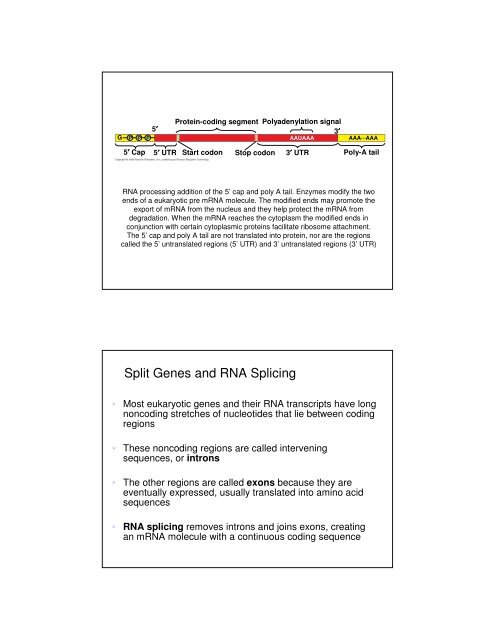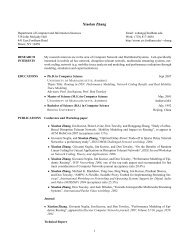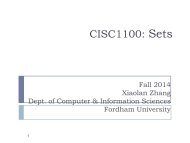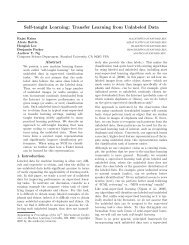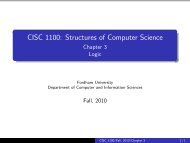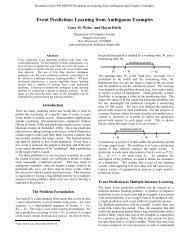Basic Principles of Transcription and Translation - Computer ...
Basic Principles of Transcription and Translation - Computer ...
Basic Principles of Transcription and Translation - Computer ...
Create successful ePaper yourself
Turn your PDF publications into a flip-book with our unique Google optimized e-Paper software.
5′<br />
Protein-coding segment Polyadenylation signal<br />
3′<br />
G P P P<br />
AAUAAA AAA…<br />
AAA<br />
5′ Cap 5′ UTR Start codon Stop codon 3′ UTR Poly-A tail<br />
RNA processing addition <strong>of</strong> the 5’ cap <strong>and</strong> poly A tail. Enzymes modify the two<br />
ends <strong>of</strong> a eukaryotic pre mRNA molecule. The modified ends may promote the<br />
export <strong>of</strong> mRNA from the nucleus <strong>and</strong> they help protect the mRNA from<br />
degradation. When the mRNA reaches the cytoplasm the modified ends in<br />
conjunction with certain cytoplasmic proteins facilitate ribosome attachment.<br />
The 5’ cap <strong>and</strong> poly A tail are not translated into protein, nor are the regions<br />
called the 5’ untranslated regions (5’ UTR) <strong>and</strong> 3’ untranslated regions (3’ UTR)<br />
Split Genes <strong>and</strong> RNA Splicing<br />
• Most eukaryotic genes <strong>and</strong> their RNA transcripts have long<br />
noncoding stretches <strong>of</strong> nucleotides that lie between coding<br />
regions<br />
• These noncoding regions are called intervening<br />
sequences, or introns<br />
• The other regions are called exons because they are<br />
eventually expressed, usually translated into amino acid<br />
sequences<br />
• RNA splicing removes introns <strong>and</strong> joins exons, creating<br />
an mRNA molecule with a continuous coding sequence


